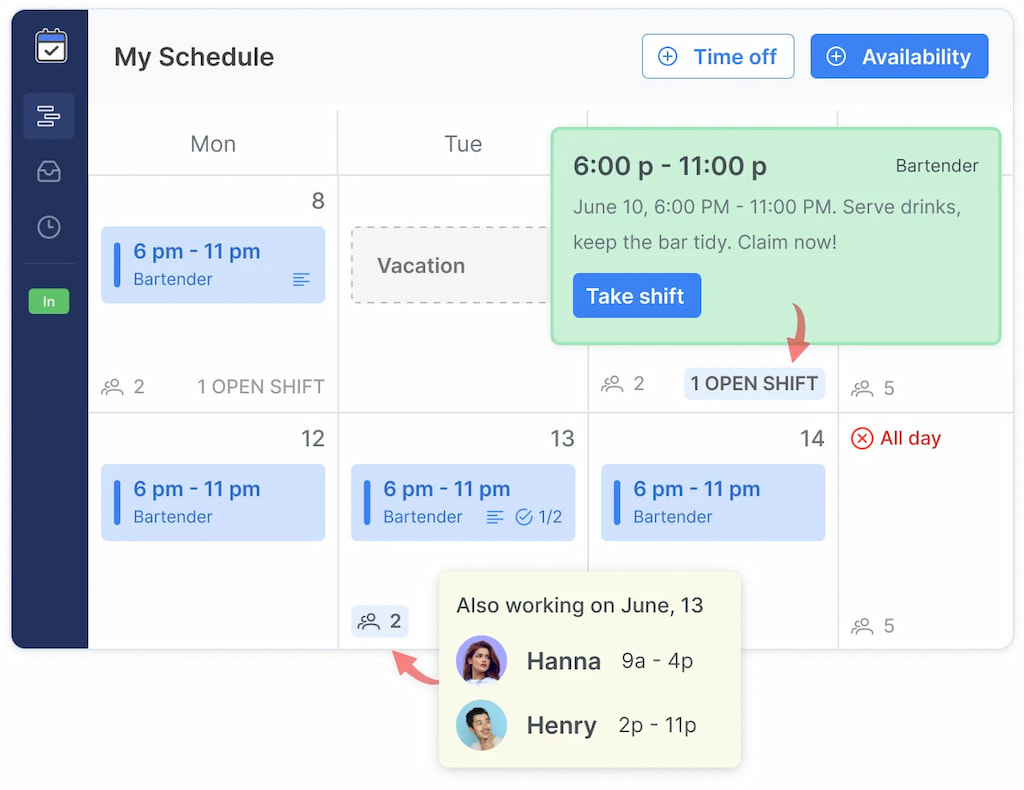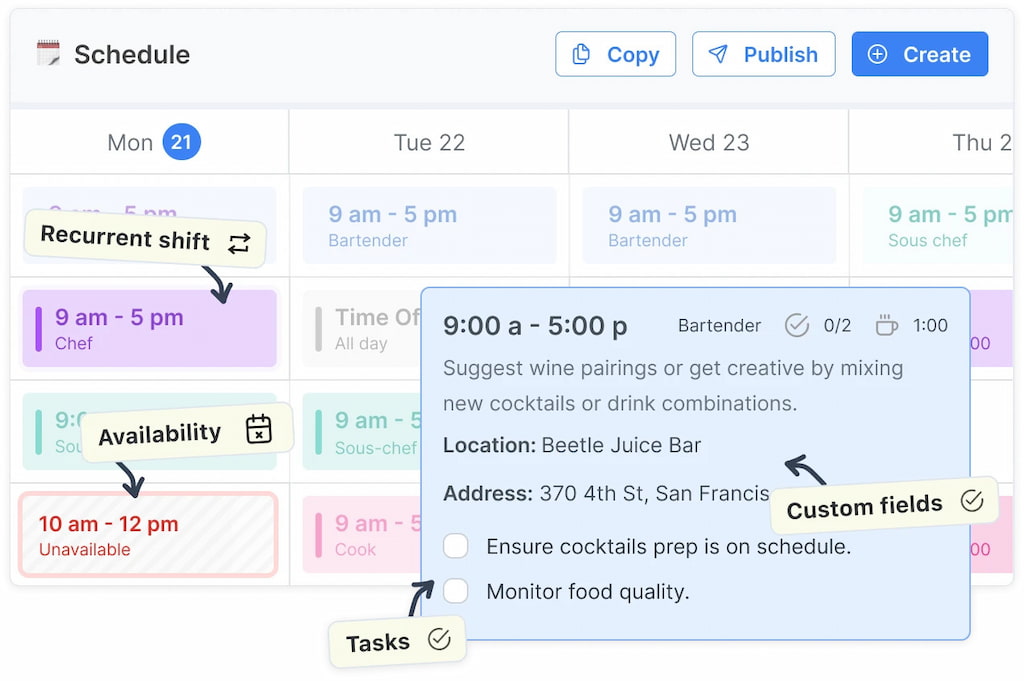Transparent scheduling isn’t just a management ideal. Companies that build fair, visible, and employee-inclusive schedules report up to 30% lower turnover. For example, a national retail chain implemented a transparent scheduling tool and saw its annual turnover rate drop from 38% to 26% within six months, alongside a 15% boost in employee satisfaction. This guide walks through how to build a fair scheduling system with team visibility in three phases—documenting your current process, defining fairness for your team, and adopting the right tool—to earn trust, improve retention, and scale efficiently.
📉 Why Scheduling Transparency Matters
Opaque scheduling leads to:
- ⏰ Last-minute shift changes
- ⚖️ Unfair or inconsistent shift distribution
- 😓 Low team morale and rising burnout
Transparent scheduling builds predictability, accountability, and respect:
- ✅ Clear expectations reduce friction
- 👀 Visibility prevents overlap and no-shows
- 🤝 Equitable practices boost retention and satisfaction
💸 The Hidden Costs of Opaque Scheduling
| Issue | Impact on business | |
| High turnover | Increased hiring and onboarding costs | |
| Low engagement | Missed shifts, reduced performance | |
| Coverage confusion | Double-booking or missed responsibilities | |
| Manager burnout | Constant reactive schedule changes |
| Metric | Opaque scheduling | Transparent scheduling |
| Turnover Rate | High | ↓ Up to 30% |
| Absenteeism | Common | ↓ 41% |
| Productivity | Inconsistent | ↑ 17% |
| Employee Satisfaction | Volatile | ↑ Significantly |
Sources: MyShyft Transparency Study (2023), WorkLife Law Stable Scheduling Report (2018), LinkedIn Fair Rostering Insights (2021)
🧩 Building Your Transparent Scheduling System
Start small, measure fast. Now that you’ve seen the data, here’s how to apply it—without overhauling everything at once:
- 1️⃣ Document your current process (who decides, how it’s shared)
- 2️⃣ Define fairness (rotations, time-off handling, shift rules)
- 3️⃣ Adopt a transparent tool with visibility and self-service (like Shifts by Everhour)

🔧 Tools That Support Transparency
Look for platforms that include:
- Drag-and-drop builders – visual, easy scheduling updates
- Real-time sync – instant updates across devices
- Rules-based alerts – flag overtime, scheduling conflicts, coverage gaps
- Time-off tracking – automate leave and integrate it into the schedule
- Role-based access – different levels of visibility for staff vs. managers

Shifts by Everhour is built for lean and growing teams. It balances control and autonomy, giving managers oversight and employees clarity. Ditch the spreadsheet mess and streamline your time-off workflow.
🧠 Common Pushbacks—and How to Respond
❓ “It’s too complex to manage everyone’s preferences.”
Use clear rules + self-service swap systems to streamline it.
❓ “We’ve always used spreadsheets.”
Start with a hybrid model—let teams experience the improvement firsthand.
❓ “Tech makes it impersonal.”
Transparency builds trust. The right tools free leaders to focus on people.
❓ “We’re too small.”
Small teams feel scheduling pain more acutely—transparency scales with you.
📊 How to Measure Success
Track these key metrics before and after implementation to measure impact:
| Metric | Baseline | Target goal |
| Schedule publication | Days before start | ≥14 days |
| Shift change rate | % changed weekly | ↓ 50%+ |
| Turnover rate | Annual % | ↓ by 15–30% |
| Team satisfaction | Pulse survey score | ↑ within 90 days |
Each of these ties directly to your workforce’s stability and sentiment. Better scheduling equals fewer surprises—and fewer exits.
🔚 Conclusion: Fair Scheduling System with Team Visibility
When your team knows when and why they work certain shifts—and can participate in the process—you’ll see more loyalty, fewer missed shifts, and a stronger, more trusting culture.
Scheduling transparency is your operational advantage.
Want to lower turnover in 90 days? Start piloting transparent scheduling with a small team. Track, refine, scale. Need scheduling templates or tools? Just ask—we’ve built the playbook for teams like yours.
Unlock intelligent scheduling for hourly workers—save time, stay flexible, and keep shifts covered.

